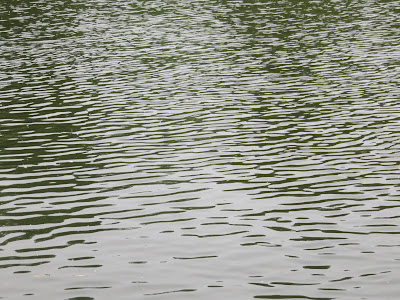Nor for
all but the latest sliver of the ninety-nine million years that followed, for
that matter.
What
about the land they now called England? That existed, in a manner of
speaking. But it had no humans yet, and so no names based on imaginary lines on
maps or in minds. It also sat about in tropical latitudes some thousand miles
from where it is now. It had dinosaurs. When it wasn’t underwater – which much
of the time it was.
And
while it was underwater, it had something else: extremely tiny planktons which,
when they died, left behind extremely tiny calcium carbonate shells. There were
a lot of them. More than forty million years’ worth in fact. And that’s why these
extremely tiny creatures are among the most extremely important things to the
people of what is now southern England.
They’re standing on them.
Standing
on them physically, but also mentally. The English like standing on these
planktons’ contributions. It makes them feel English. Be it rolling downs like
the Chiltern Hills or the soaring cliffs of Dover and Beachy Head, chalk is a
nigh-obligatory feature in the green-and-pleasant landscapes of their national
imagination.
The
cliffs are ironic. Within that imagination their chalk is a barrier, a natural
wall against the inferior barbarian hordes on the European mainland. In
reality the chalk does the opposite. Its province of deposits does not separate
but connects England, France, Belgium and the Netherlands over a
timespan for much of which the island of Britain was no island at all but a
European peninsula. The Dover cliffs are not a wall, but a bridge beneath the Channel to the
Alabaster Coast of Normandy. It’s the
same chalk.
Chalk
– that is the concern of today’s length of river. It is through the outer arms
of this Cretaceous (literally, chalky) realm that the river cuts down to Reading
and the comparatively recent sands and clays of the London Basin. And
having followed the water up that basin, it is time to cross into a
more ancient land: the Jurassic reaches of Oxford, and in their midst, the river’s
origins in Cotswold limestone.
The
river created this passage itself. Later it would prove important to the human
immigrants by funnelling their boats, roads and railways through its narrow
corridor. And so the corridor sprouted a pair of villages: Goring on one side,
Streatley on the other. From the former comes their present name for this
gap in the chalk: the Goring Gap.
Start:
Whitchurch Bridge (nearest station: Pangbourne)
End:
Goring Bridge (nearest station: Goring and Streatley)
Length:
6.4km/4 miles
Location:
Oxfordshire – South Oxfordshire
Topics:
Whitchurch, Hartslock Wood, Gatehampton, Goring, and the geology of the Thames












